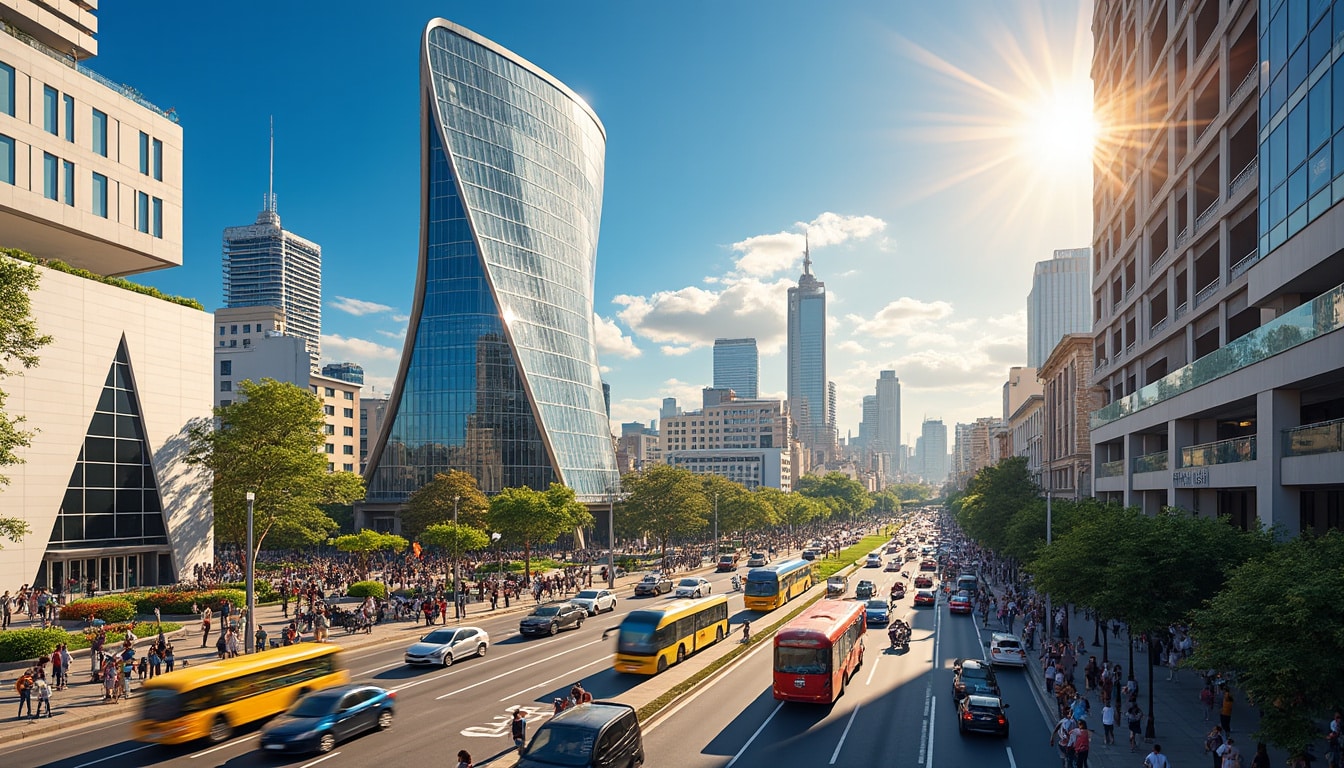São Paulo, a sprawling metropolis in Brazil, is a fascinating confluence of modernist innovation and cultural vibrancy. Founded on the riches of coffee plantations, the city swiftly evolved into a cosmopolitan hub, attracting architectural visionaries who contributed to its remarkable skyline. From sweeping avenues to serene parks, the architectural wonders of São Paulo tell stories of aesthetic daring and cultural integration. This article guides readers through the architectural prowess and urban characteristics that define this relentless urban landscape.
Modernist Foundations of São Paulo’s Architectural Identity
The evolution of São Paulo’s architectural landscape is deeply intertwined with the development of modernism in Brazil. Modernism flourished here in the 20th century, articulating its influence through projects like the iconic São Paulo Museum of Art. Architecture was not merely about physical structures but an expression of cultural and social change, with architects like Lina Bo Bardi emphasizing community-centric spaces.
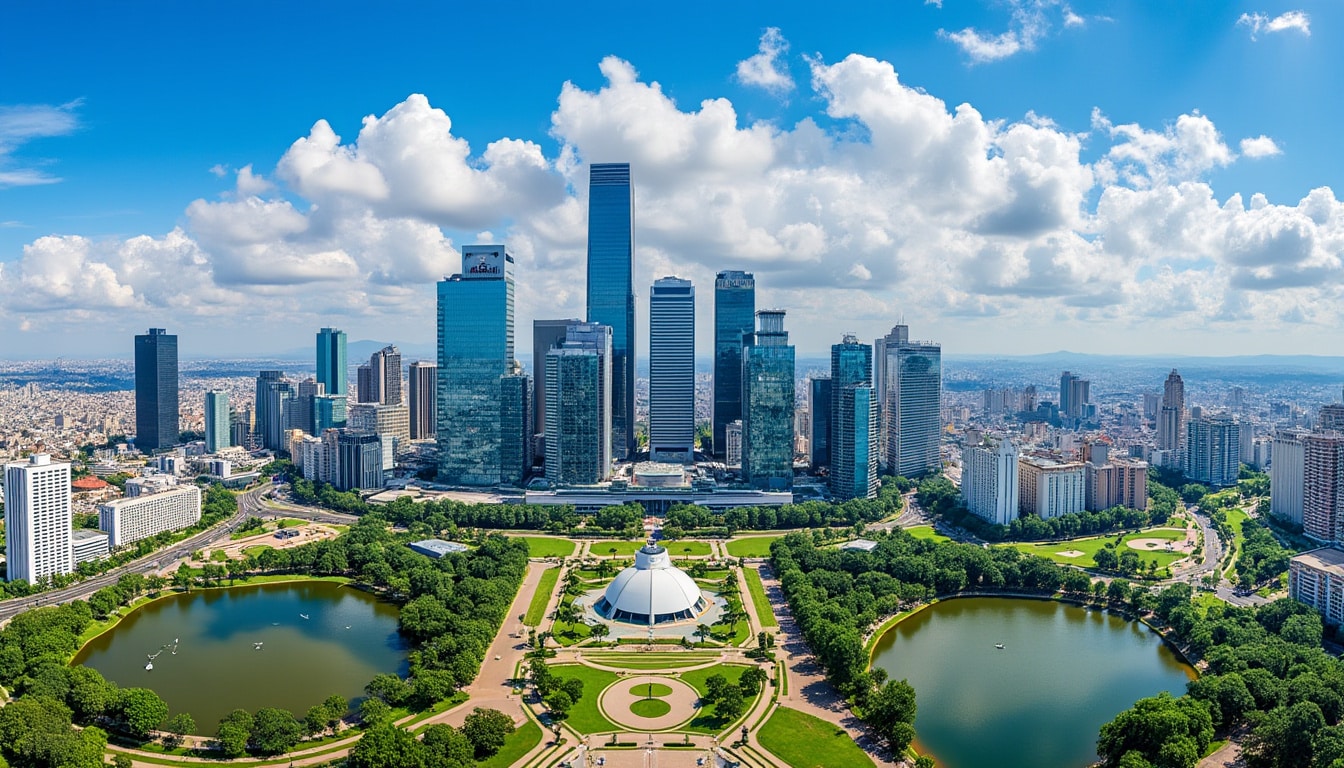
The Role of Paulista Modernism
Paulista Modernism, born from a desire to reflect local culture rather than emulate European styles, stands out for its robust and bold structures. The Faculty of Architecture and Urbanism (FAU-USP) at the University of São Paulo is a paragon of this style, blending rough concrete forms with open, communal spaces. Designed in 1961 by João Batista Vilanova Artigas, this building symbolizes both architectural achievement and political assertion, with its open design fostering student interaction and learning.
The Influence of the Semana de Arte Moderna
The Semana de Arte Moderna in 1922 became a pivotal event that shifted the artistic direction towards Brazilian roots. It was an initiative where intellectuals such as Tarsila do Amaral advocated for architecture that was inspired not by European grandeur but by local realities and needs. This ideological shift marked the beginning of a unique style that would unfold in the architectural endeavors across the city.
Iconic Architectural Marvels of São Paulo
Among São Paulo’s skyline stands several architectural masterpieces that offer deeper insights into the city’s history and culture. Here are some must-visit sites:
- 🖼️ Copan Building: Designed by Oscar Niemeyer, this iconic residential building features a sinuous form that echoes the vibrancy of São Paulo’s urban life.
- 🏛️ Theatro Municipal de São Paulo: A testament to the city’s enduring cultural commitment, this theater is renowned for its ornate design influenced by the Paris Opéra.
- 🎨 Pinacoteca do Estado de São Paulo: Not only an art museum, but also a testament to São Paulo’s dedication to preserving cultural heritage through its beautifully restored building.
Each of these structures reflects a different aspect of São Paulo’s dynamic spirit, from its commitment to artistic expression to its resilience and adaptability in urban planning.
The São Paulo Museum of Art: A Beacon of Innovation
The São Paulo Museum of Art (MASP) is exemplary of modernist architecture with its daring use of free-standing space and open areas beneath a bold structure. This design not only serves aesthetic purposes but is a practical solution to urban congestion, allowing public engagement through exhibitions and gatherings.
Edifício Altino Arantes and its Historical Importance
Once the tallest building in São Paulo, Edifício Altino Arantes, known as the “Banespa Building,” is a monument to the city’s rapid modernization. Completed in the 1940s, its style is influenced by the Art Deco movement, further diversified by local inputs, which made it a remarkable emblem of the city’s growth and ambition.
Public Spaces and Urban Parks of São Paulo
Urban planning in São Paulo reflects a careful balance of metropolitan demands with green spaces that offer respite from the city’s hustle and bustle. Parks such as Ibirapuera Park and Villa-Lobos Park provide not only relaxation but also contribute to the architectural beauty of the city.
Ibirapuera Park: An Urban Oasis
Ibirapuera Park is often compared to New York’s Central Park for its vast lushness amidst an urban setting. Designed by Oscar Niemeyer, this park blends natural beauty with cultural fixtures, including museums and auditoriums, offering citizens and tourists a perfect getaway from the city’s bustling environment.
- 🚴♂️ Bike paths for leisurely rides
- 🎭 Cultural spaces with engaging exhibits
- 🌳 Expansive green lawns for picnics and relaxation
Villa-Lobos Park: Embracing Nature and Urban Life
Another jewel, Villa-Lobos Park, named after the famous Brazilian composer, serves not only as a recreational haven but highlights the innovative use of landscape architecture. The park’s design seamlessly integrates with urban life, encouraging environmental awareness and active lifestyle amongst São Paulo’s residents.
Urban Districts and Cultural Significance
The cultural tapestry of São Paulo is woven through its varied districts, each with its own architectural character and historical relevance. While districts like the Jardins are known for their chic ambiance, others offer rich historical narratives and architectural significances.
The Sophistication of the Jardins District
The Jardins District exemplifies sophisticate living with its high-end boutiques, art galleries, and fine dining establishments. The district is a testament to São Paulo’s dual identity—balancing cosmopolitan luxuries with tradition. The architecture here blends contemporary designs with timeless elegance, creating a unique urban environment.
Paulista Avenue: The Heart of Cultural Expression
Paulista Avenue acts as a cultural heartbeat for São Paulo. This vibrant area is adorned with a variety of art museums, cultural centers, and historical edifices where the city’s pulsating creativity is palpable. Its architecture is a celebration of past and present, with structures like the Museum of the Portuguese Language fostering a deeper understanding of Brazil’s cultural continuity.
Sustainability and Future Urban Planning
As São Paulo looks toward the future, the city’s focus is increasingly on sustainable architecture and green urban planning. These initiatives aim to address the environmental challenges posed by São Paulo’s rapid growth and density.
Efforts toward Eco-Friendly Architecture
Sustainability has become integral in São Paulo’s architectural projects. Initiatives are underway to incorporate sustainable practices in building designs, utilizing renewable resources and minimizing carbon footprints. Projects focusing on solar energy, efficient waste management, and green rooftops are gaining momentum, advocating for eco-conscious developments in urban settings.
- 🌱 Use of renewable materials in construction
- ☀️ Incorporation of solar panels and green rooftops
- 🚮 Waste reduction strategies and efficient recycling systems
Community-Centric Urban Revitalization
Urban revitalization projects are working to transform neglected areas into thriving community spaces. The initiative seeks to blend modern architectural techniques with community-focused designs, ensuring that urban development remains inclusive and sustainable. As such, São Paulo is poised to remain progressive in melding architectural innovation with social responsibility.
Conclusion on Sustainability and Planning
While São Paulo’s architectural might is undeniable, its urban promise lies in adopting future-forward practices. The city’s commitment to sustainable growth, coupled with a respect for cultural heritage, ensures its continued allure as a metropolis that never ceases to inspire.
FAQ
- What is Paulista Modernism? Paulista Modernism is a unique architectural style that emerged in São Paulo, focusing on bold concrete forms and open spaces, reflecting the city’s culture and infrastructure.
- Which are the key architectural sites to visit in São Paulo? Must-visit sites include the São Paulo Museum of Art, Copan Building, Theatro Municipal, and Ibirapuera Park for their architectural significance and cultural value.
- How is São Paulo addressing urban sustainability? São Paulo is implementing sustainable practices such as using renewable resources in building design, and enhancing community spaces to address environmental and urban challenges.
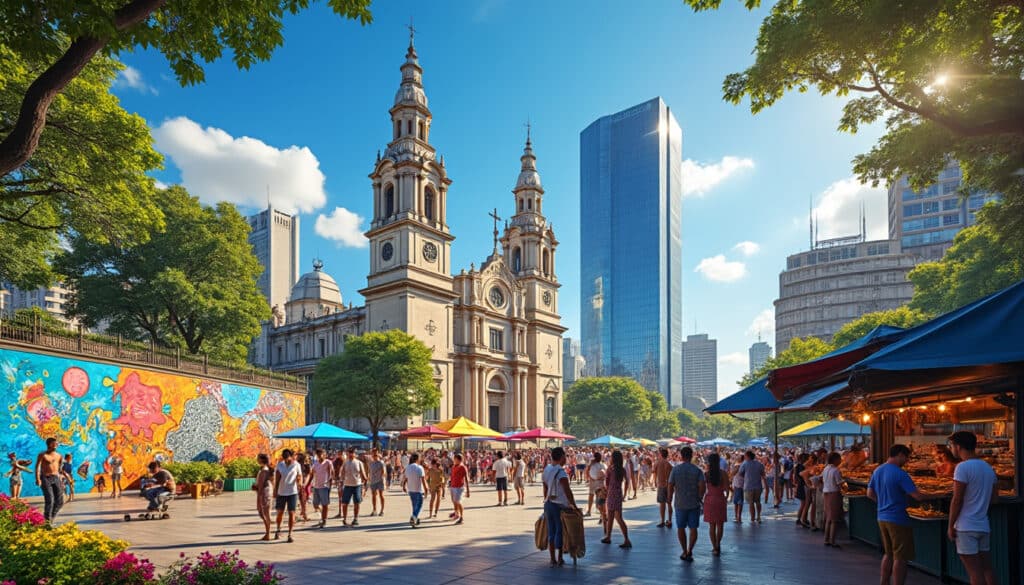
Fun Facts & Curiosities About Sao Paulo
Explore the vibrant landscape of São Paulo, a city teeming with hidden stories, cultural milestones, and urban legends. From its unexpected climate events to its pivotal role in the art world, São Paulo exudes a mix of history and modernity…

Explore the dynamic and cosmopolitan heart of Brazil with these basic facts about Sao Paulo, a city known for its vibrant culture, rich history, and bustling economy. Whether it’s the picturesque streets of Vila Madalena or the architectural marvels that…
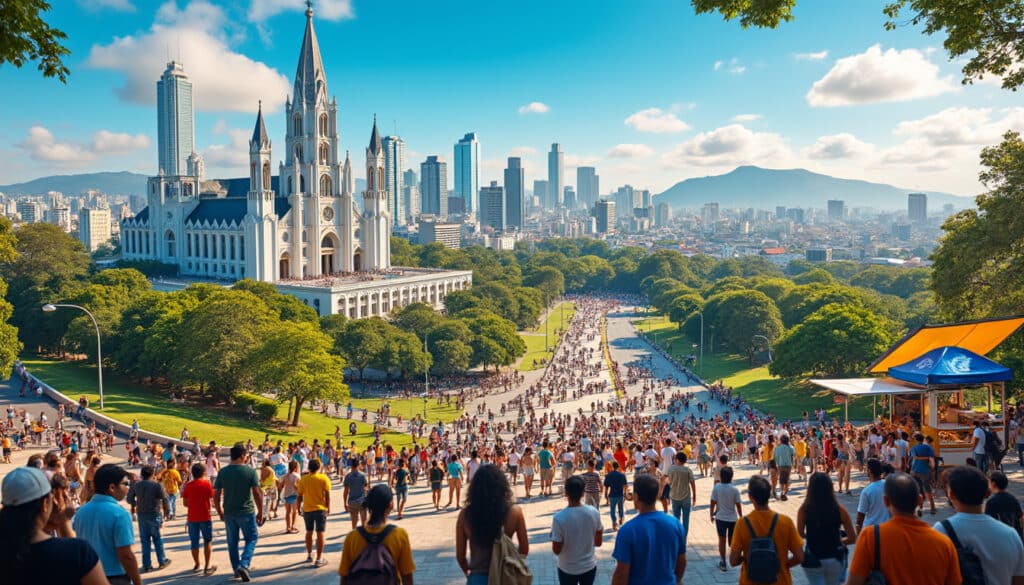
Demographics and geography of Sao Paulo
São Paulo, the vibrant heart of Brazil, is not merely a bustling economic powerhouse but a fascinating mosaic of geographical wonders and diverse demographics. From the rolling plains of its inland plateau to its rich coastal ecosystems, São Paulo forms…
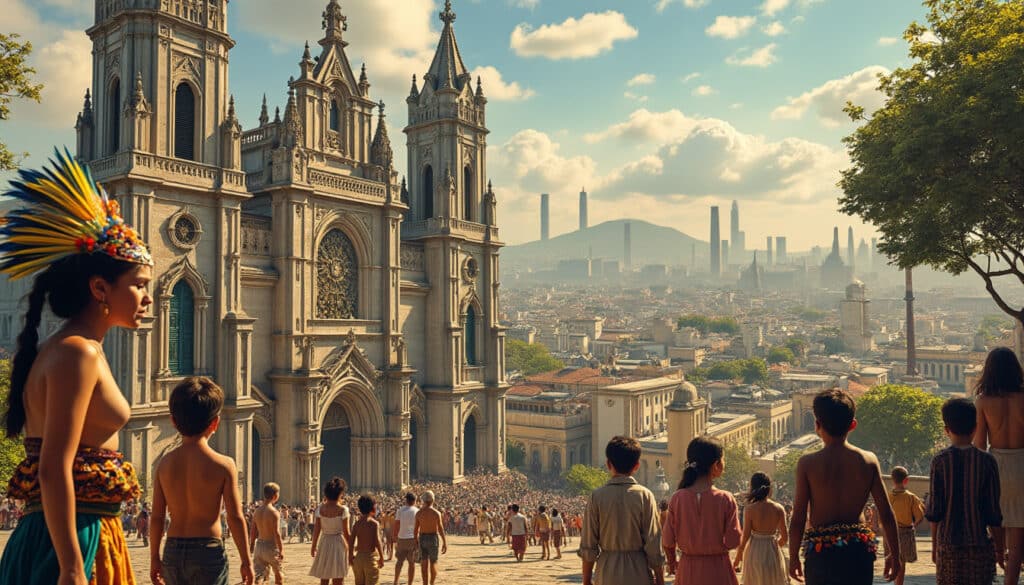
São Paulo, a sprawling metropolis, is a vibrant tapestry weaving together almost 500 years of history. It is Brazil’s largest and wealthiest city with a dynamic mix of cultures, innovation, and historical richness that has captivated locals and tourists alike.…

Holidays and celebrations in Sao Paulo
São Paulo, the bustling metropolis of Brazil, is renowned for its vibrant culture and dynamic celebrations. Throughout the year, the city buzzes with energy from a myriad of events and festivals that highlight its diverse cultural heritage and communal spirit.…

Language and spelling of Sao Paulo
São Paulo, Brazil’s largest and most bustling metropolis, serves as a vibrant tapestry of language and culture. Nestled in the heart of the nation, this city is a linguistic conundrum, reflecting Brazil’s diverse heritage through its unique spellings and pronunciations.…

Local tips for tourists in Sao Paulo
São Paulo, a vibrant and sprawling metropolis in Brazil, is an intriguing destination for travelers seeking cultural diversity, culinary delights, and architectural marvels. Known for its pulsating energy and eclectic neighborhoods, the city offers a plethora of experiences waiting to…
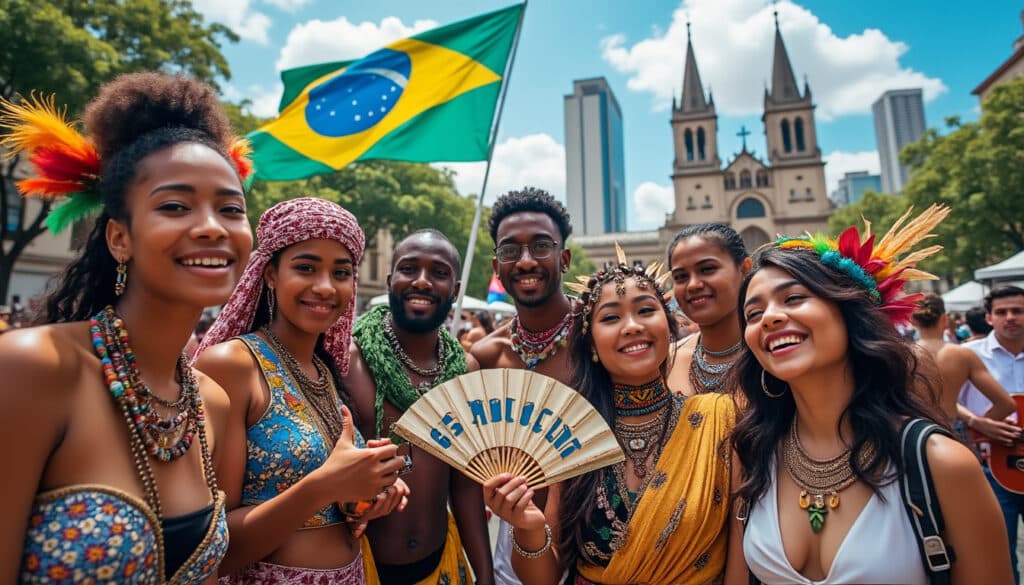
Names, flags, and identity of Sao Paulo
With a rich tapestry of cultural influences, São Paulo stands as a dynamic symbol of Brazil’s vibrant history and contemporary diversity. The names and flags associated with this colossal city intertwine both the past and the present, reflecting the multitude…

Reputation and identity of Sao Paulo
Boasting a cosmopolitan charm and a thriving cultural landscape, São Paulo stands as Brazil’s busiest metropolis. Its identity and reputation have been shaped by centuries of cultural, economic, and intellectual development. From its vibrant festivals and diverse cuisine to its…
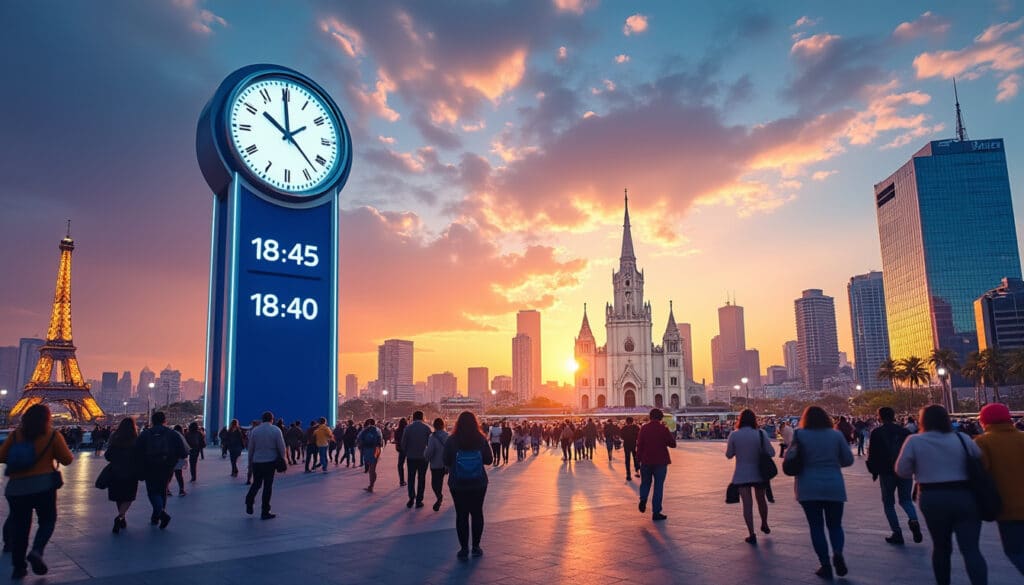
Time and time zone in Sao Paulo
✨ Amidst the vibrant chaos of São Paulo lies a fascinating aspect that ensures the city runs smoothly: its time zone. This bustling metropolis is known for its electrifying urban culture, pulsating nightlife, and economic significance. However, understanding the time…

Unusual facts and social issues in Sao Paulo
Embracing a mix of tradition and modernity, São Paulo, Brazil’s bustling metropolis, stands as a vibrant canvas for unexpected stories and complex social dynamics. While it’s famed for its economic significance and cultural pulse, São Paulo is also a city…
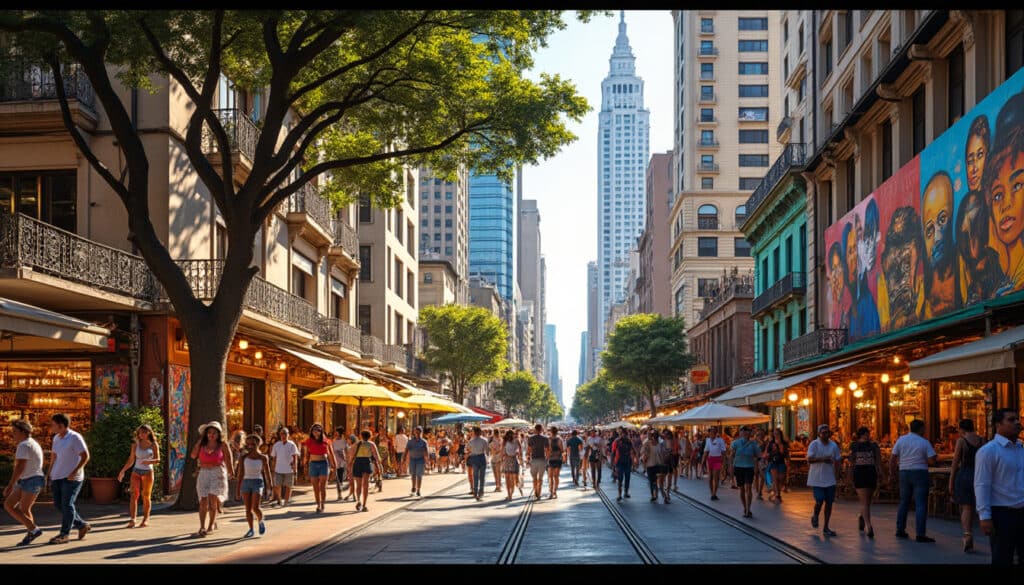
What does Sao Paulo look, smell, feel like?
São Paulo, with its towering skyscrapers, bustling markets, and a mix of graffiti-covered streets, is a cacophony of sensory experiences. This sprawling metropolis thrives with vibrant energy, echoing the diverse cultures that have shaped its identity over the years. It’s…

